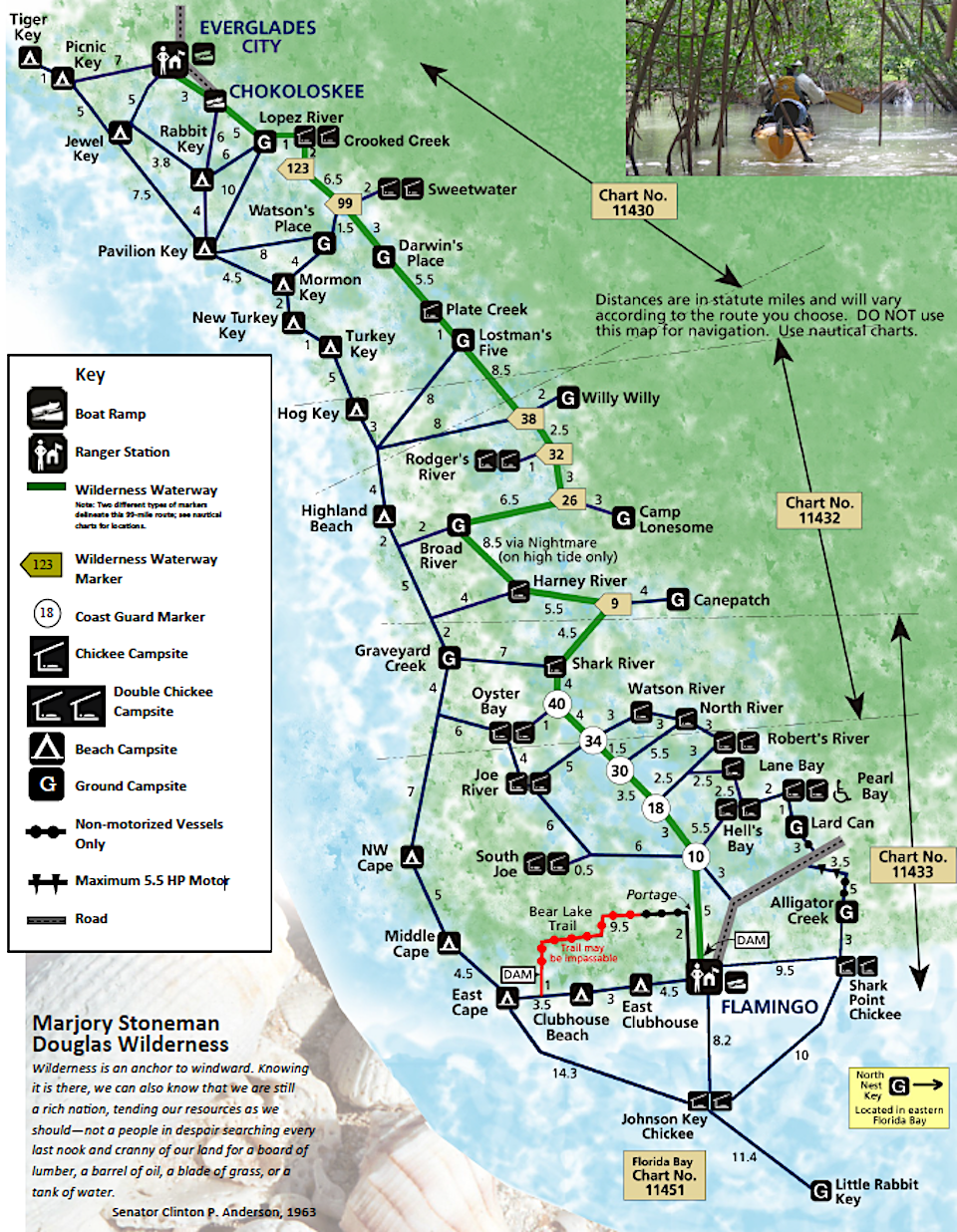
The Wilderness Waterway at Everglades National Park Turns 40 This Year/NPS
It is one of the most magical, and demanding, backcountry treks you can make in the National Park System east of the Mississippi. For a week or more you can leave civilization in your wake as you explore Everglades National Park by canoe or sea kayak along the Wilderness Waterway, which turns 40 this year.
The 99-mile-long trail that follows creek and inland waterways connects Everglades City on Florida's west coast with Flamingo on the east coast. It serves as a way to access and recreate in the Marjory Stoneman Douglas Wilderness, with paddlers moving through water and land that is designated wilderness.
Numbered markers wind through mangrove forests, through Whitewater Bay, and around countless mangrove islands. Boats equipped with outboard motors can make the trip in one day, but canoeists usually take about nine. Campsites are available along the route, including open-sided huts (chickees) perched on stilts in places with no dry land. Backcountry permits (available at the Gulf Coast and Flamingo Visitor Centers) are required for overnight stays.

Map of the Wilderness Waterway at Everglades National Park (not for navigation)/NPS
Since summer insect conditions can be nearly intolerable, deterring all but the most hardy individuals, this should be considered a winter recreational choice. There are many narrow channels and a lot of overhanging vegetation along the Wilderness Waterway, so boaters should not use vessels that are more than 18 feet long or have high cabins or windshields. Nautical charts are useful for planning and a vital tool for navigation in the coastal zone.

To celebrate its 40th anniversary, the waterway is unveiling a new logo now featured on each of the newly installed navigational markers (right photo) along the water trail.
Completing the trail generally take 7 to 10 days. Campers can stop along the way and rest on the iconic chickees, or sheltered elevated platforms standing in the water. Advanced reservations for campsites can be made through http://Recreation.gov.



Comments
I love how you wrote this article without even a mention of my friends Barbara Home Steward and her Husband Orin Good Fogle who blazed the Waterway and created canoe trails and camping sites that are still used today. Without them there would be no Wilderness Waterway
My dear friend, Jim Tidd, led a three-person group in two canoes through the Wilderness Waterway in 2003. Jim planned and organized our expedition and made this experience of a lifetime possible. All images were taken with a small pocket digital camera, a Canon Powershot. The single battery stayed charged throughout the trip and for one night of digital editing.
Click here.
I noted your text says the waterway starts on the west coast of Florida and ends on the east coast. Not true. It does not cross Highway 1.
Here is a photo essay of my 2003 trip through the Wilderness Waterway. https://tredding.org/canoe/
Thanks for sharing, Terry. Looks like a fantastic trip.
It was. My first and only canoe trip. But what a trip. There were so many fascinating aspects. I was very fortunate to be invited along by two highly accomplished micro-backpackers. Both Jim and Doug have hiked the Appalachian Trail. Them with their angle nets and seabags. Me with a Rubbermaid footlocker. I was so very lucky it fit in the width of the larger canoe.